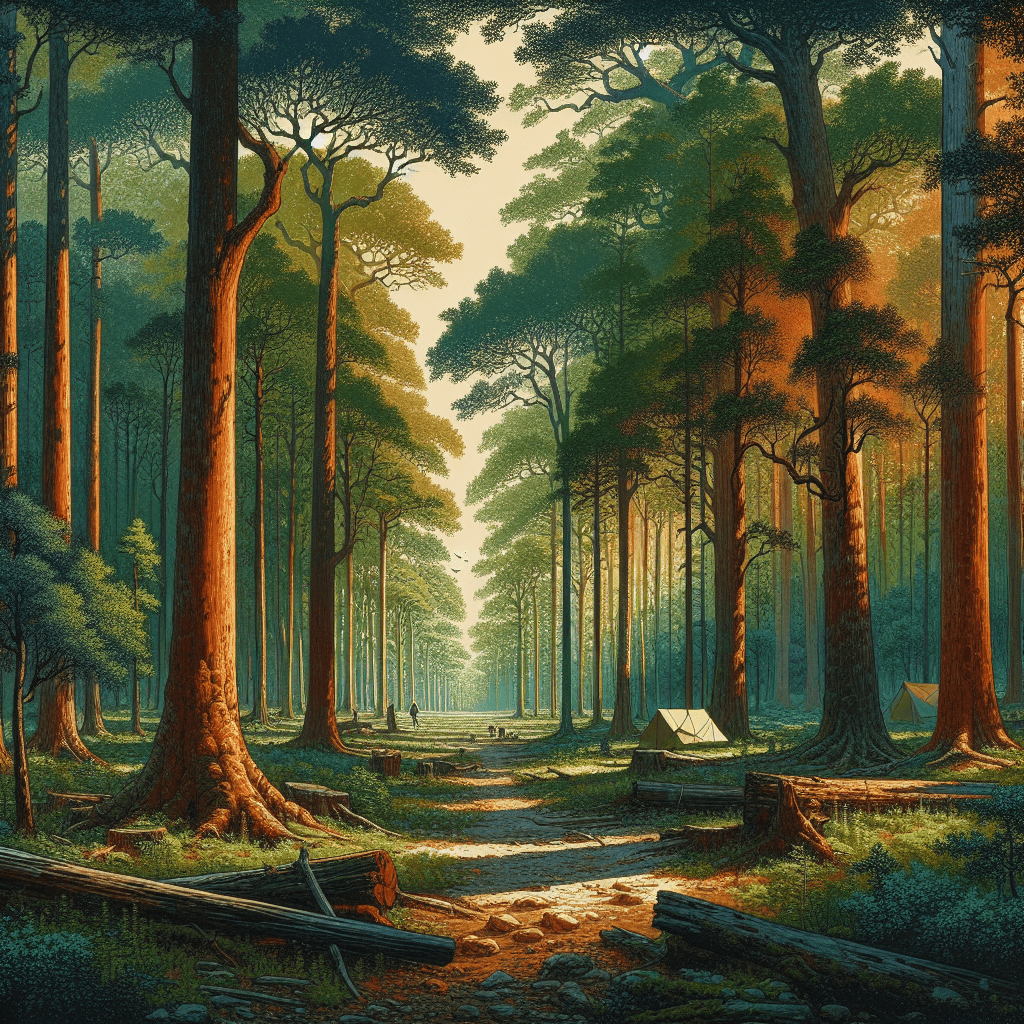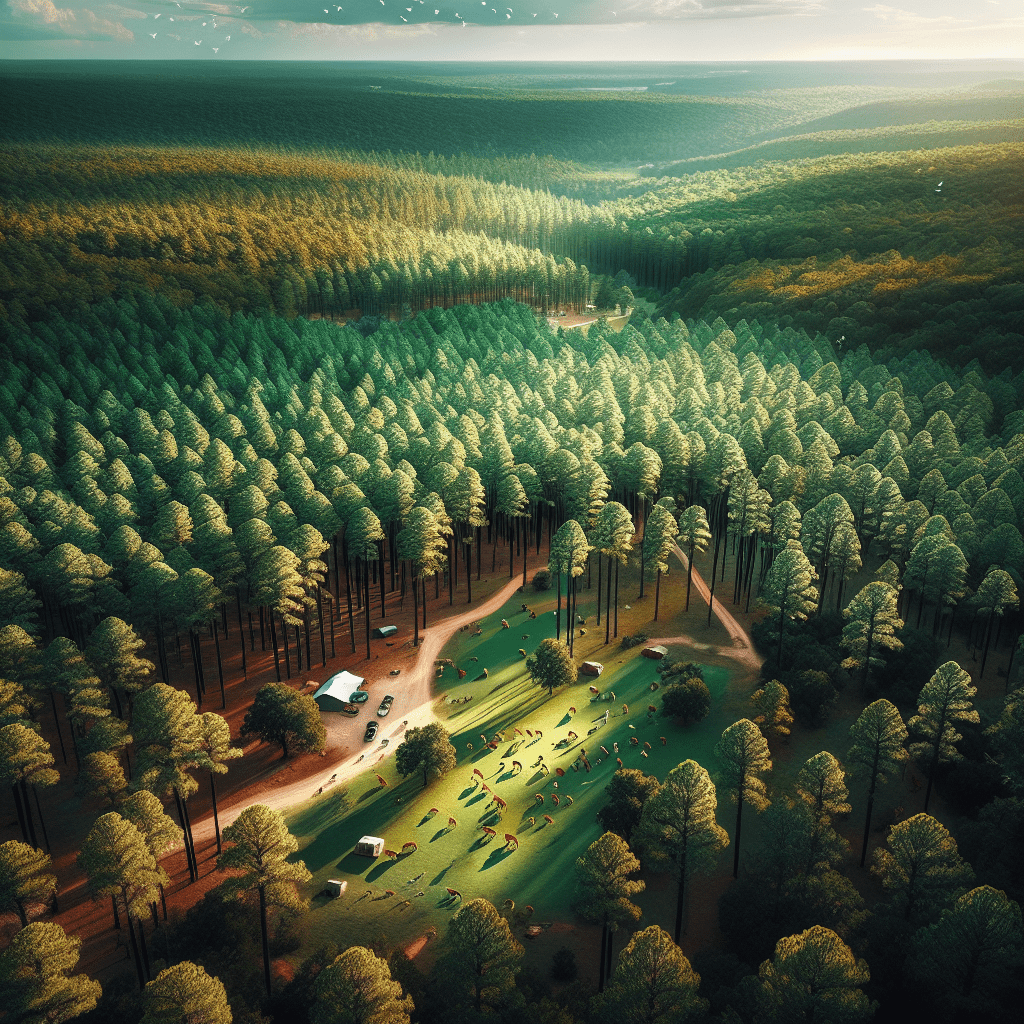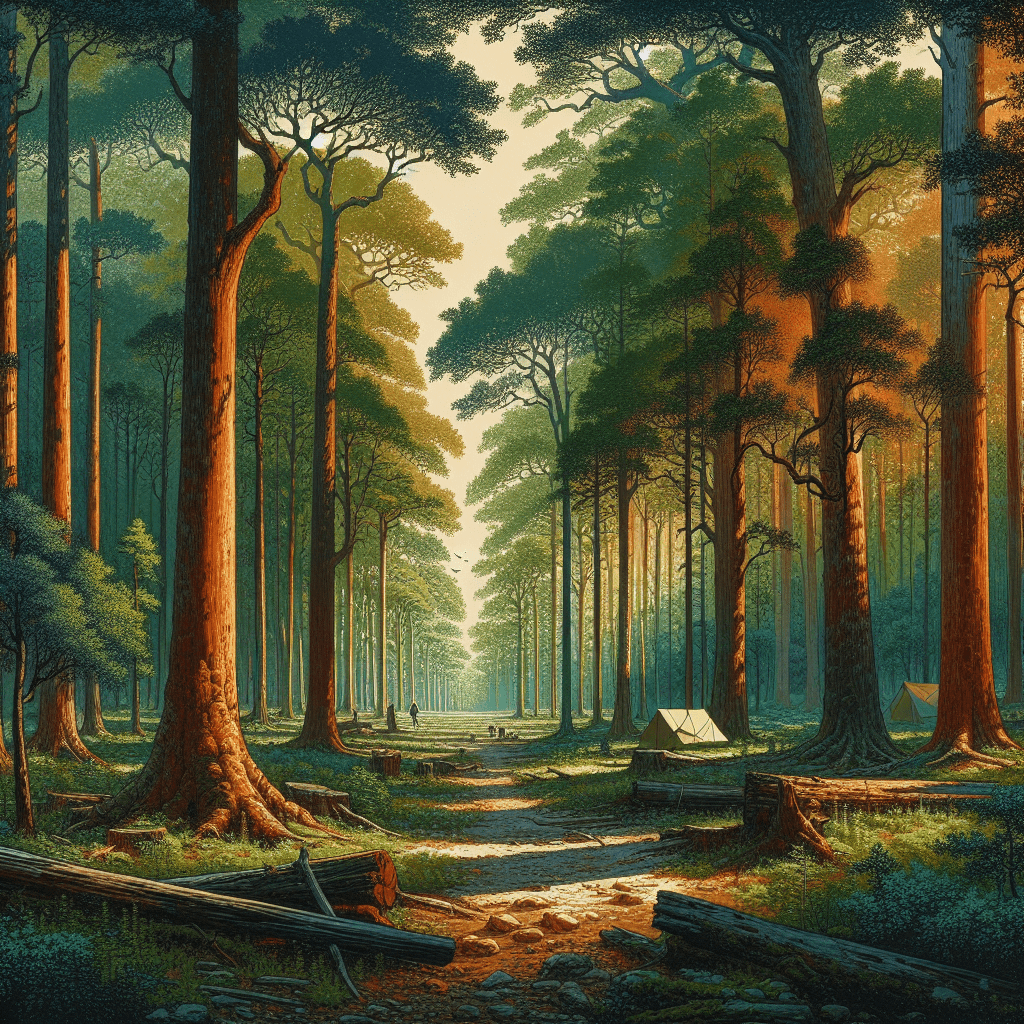
Are you itching to experience the serene beauty of the Lost Pines in Bastrop State Park? Look no further, as we’ve got you covered! In this article, we will guide you on how to access and explore the mesmerizing Lost Pines, leaving you with unforgettable memories of nature’s wonders. So, grab your hiking boots, join us on an adventure, and let’s uncover the enchanting secrets of the Lost Pines together!

Bastrop State Park Overview
Welcome to Bastrop State Park, your gateway to the enchanting Lost Pines! Nestled in the heart of Central Texas, this state park offers a unique blend of history, natural beauty, and recreational opportunities. Whether you are a history buff, an outdoor enthusiast, or simply looking for a peaceful getaway, Bastrop State Park has something for everyone.
History of Bastrop State Park
Bastrop State Park holds a rich historical significance. Established in 1938 by the Civilian Conservation Corps (CCC), it stands as a testament to the perseverance and dedication of the CCC workers during the Great Depression. The park’s historic CCC cabins, built with locally sourced timber and stones, serve as a reminder of the time when the park came into existence. Exploring these cabins can transport you back in time, allowing you to appreciate the craftsmanship and effort that went into creating this remarkable place.
Location and Size
Situated just 30 miles southeast of Austin, Texas, Bastrop State Park spans an impressive 5,926 acres. It is located within the unique ecosystem known as the Lost Pines, which makes this park truly exceptional. While it may seem surprising to find a stand of pine trees in the midst of central Texas’ predominantly deciduous forests, the Lost Pines provide a haven for an array of plant and animal species. This pocket of pine forest has its roots tracing back to the last Ice Age, making it a remarkable natural treasure.
Importance of the Lost Pines
The Lost Pines are a significant ecological and cultural feature of Texas. This isolated island of loblolly and shortleaf pines serves as a vital habitat for numerous wildlife species, some of which are rare and endangered. The dense canopy of these majestic pines provides shelter and nesting sites for birds, including the endangered Houston toad. Additionally, the Lost Pines ecosystem plays a crucial role in preserving air and water quality, making it essential for sustaining the overall ecological balance of Central Texas.
Accessing Bastrop State Park
Entrance Fees and Hours
To access the wonders of Bastrop State Park, a nominal entrance fee is required. Please check the official park website or contact the park office for up-to-date information on fees and hours of operation. Keep in mind that daily hours may vary seasonally, so it is always a good idea to plan your visit accordingly.
Getting to Bastrop State Park
Bastrop State Park is conveniently located near several major highways, making it easily accessible by car. If you are traveling from Austin, head southeast on Highway 71 for approximately 30 miles until you reach the park entrance. From Houston, take Interstate 10 west until you reach the Highway 71 exit, then head east to the park. Regardless of your starting point, a scenic drive through Texas’ beautiful countryside awaits you on the way to Bastrop State Park.
Parking Facilities
When you arrive at Bastrop State Park, you will find ample parking options to accommodate visitors’ vehicles. Whether you are embarking on a day trip or planning an extended stay, the park offers designated parking areas near various trailheads, campsites, and visitor facilities. Rest assured, parking is hassle-free, allowing you to focus on immersing yourself in the natural wonders that await within the park.
Exploring the Lost Pines
Hiking Trails in the Lost Pines
If you’re eager to trek through the Lost Pines and immerse yourself in nature, Bastrop State Park offers a multitude of hiking trails suitable for explorers of all skill levels. From leisurely strolls to challenging hikes, there is a trail for everyone. The scenic Piney Hill Trail offers breathtaking views of the surrounding landscape, while the Lost Pines Nature Trail provides an educational experience with interpretive signage along the way. Lace up your hiking boots, pick a trail, and let the adventure begin!
Wildlife Observation in the Lost Pines
The Lost Pines are teeming with wildlife, making Bastrop State Park an ideal location for wildlife observation and photography. Keep your eyes peeled for white-tailed deer gracefully bounding through the forest, or listen for the distinct calls of various bird species. If you’re lucky, you may even spot a painted bunting, a vibrant and rare bird that considers the Lost Pines its home. As you explore, remember to maintain a respectful distance from the animals and observe them in their natural habitats.
Camping Options in the Lost Pines
Immerse yourself in the beauty of the Lost Pines by spending a night under the starry Texas sky. Bastrop State Park offers various camping options to suit your preferences. From traditional tent camping to RV sites with full hookups, there is a camping experience for every type of outdoor enthusiast. Wake up to the sound of birds chirping and enjoy the tranquility of nature before embarking on another adventure-filled day.
Visitor Services and Amenities
Visitor Center and Ranger Programs
Upon your arrival at Bastrop State Park, be sure to visit the visitor center to gather information about park amenities, programs, and events. The knowledgeable park staff are more than happy to answer any questions you may have and provide guidance to ensure you make the most of your visit. Additionally, the park offers a range of ranger-led programs, providing the perfect opportunity to learn about the park’s history, ecology, and wildlife firsthand.
Picnic Areas and Facilities
After a day of exploring and adventure, take some time to relax and enjoy a picnic in one of the park’s designated picnic areas. These shaded spots are ideal for unwinding with family and friends while surrounded by nature’s beauty. The park provides picnic tables, grills, and restroom facilities to make your experience as comfortable and convenient as possible. So pack a picnic basket, gather your loved ones, and savor a delightful meal in the heart of nature.
Other Recreational Activities
While the Lost Pines steal the show, Bastrop State Park offers more than just hiking and wildlife observation. If you’re a water enthusiast, you’ll be delighted to know that the park features a swimming pool for those seeking to cool off during the hot Texas summers. Fishing enthusiasts can try their luck at catching bass, catfish, or sunfish in the park’s pond. Additionally, the park boasts a golf course, giving visitors the chance to practice their swing amid the picturesque backdrop of the Lost Pines.

Preservation and Restoration Efforts
Threats to the Lost Pines
The Lost Pines face numerous threats that could impact the longevity of this unique ecosystem. Expansion of urban areas, climate change, and invasive species are putting pressure on the delicate balance of the pines and the associated wildlife. As responsible visitors, it is important for us to respect the park’s rules and regulations, stay on designated trails, and leave no trace behind. By doing so, we can help minimize the impact of these threats and preserve this irreplaceable natural treasure for generations to come.
Conservation Organizations
Preserving the Lost Pines ecosystem requires a collective effort, and there are several conservation organizations dedicated to this cause. These organizations play a crucial role in raising awareness, conducting research, and implementing conservation strategies to protect the Lost Pines. By supporting these organizations through volunteering, donations, or simply spreading the word, we can contribute to the ongoing conservation efforts and ensure the survival of this remarkable ecosystem.
Reforestation Initiatives
To address the challenges facing the Lost Pines, Bastrop State Park and various conservation organizations have undertaken reforestation initiatives. By planting new trees and restoring areas affected by wildfires, these efforts aim to replenish the pine forest and support the overall health of the ecosystem. Participating in volunteer tree planting events or supporting these initiatives financially can make a significant difference in restoring and preserving the Lost Pines for future generations to enjoy.
In conclusion, Bastrop State Park offers an incredible opportunity to access and explore the captivating Lost Pines. From its rich history and remarkable natural beauty to its diverse recreational opportunities, this park is truly a gem worth discovering. So, gather your loved ones, pack your hiking boots, and let the Lost Pines work their magic as you embark on an unforgettable adventure in Bastrop State Park.